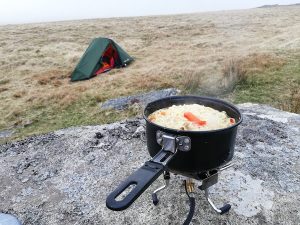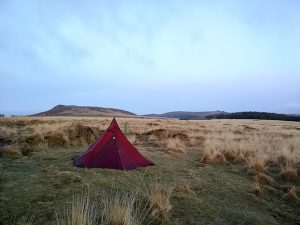How do you choose the longest lasting outdoor kit?
Most people I know who love the outdoors want to look after the planet and make climate-friendly choices, but they also love buying shiny new outdoor gear. I include myself in this and have noticed, over the years, that some equipment is better at taking the blows of outdoor life than others.
Outdoor gear fails
If you’ve spent time outside, you’ll know the type of gear failure I’m talking about but here are a few examples:
- Zips that always get stuck
- Tents poles that buckle in the wind
- Waterproof jackets that let the rain in
- Walking poles that collapse under pressure
Long-lasting outdoor gear

I’ve seen plenty of outdoor kit disasters and none of them have been insurmountable but buying new gear replacements isn’t just bad for my bank balance, it’s pretty disastrous for the planet. Think about all that energy required to make and deliver brand new outdoor items. And that’s on top of the environmental cost of disposing of the old ones.
But it’s not all bad news. Here are four examples of outdoor kit that for me, have stood the test of time:
| Outdoor Gear | Paramo Adventure Light Smock | Mountain Equipment Sleeping Bag | Alpkit Brukit Camping Stove | Lowe Alpine 40 Litre Rucksack |
| Years Owned (approx) | 18 years | 17 years | 12 years | 12 years |
| Equivalent Price Today | £260 | £396 | £50 | £150 |
| What’s great | Totally wearable Loads of pockets Fantastic zips | Still warm in most conditions Zips still work well Still lofts effectively | Lights first time Great in high wind Quick boil in emergencies | No wear on the straps Still super comfortable Has worked really hard |
| Repair services | Repair services Alteration & wash services Care advice | Repair services Wash services Care advice | Repair services Wash services Care advice | New webbing Zip repairs Patch repairs |
The cost per use factor

I know! The first thing I noticed when I looked up today’s equivalent prices for my long lasting gear items was how much more they cost today than when I bought them. One suggestion is perhaps that you get what you pay for but this isn’t always true. I know people who’ve bought expensive tents that haven’t lasted, expensive waterproofs that haven’t been and even expensive backpacks that have ended day one with only one strap. Of course you can always repair your outdoor gear but it’s better if it doesn’t break in the first place.
To my mind, the best way to measure value in a piece of outdoor gear is to look at its cost per wear. It’s simple piece of maths that you don’t need to do with any amount of accuracy. Just divide the cost of the item by the number of times you have used it. Of course, for the longer lasting gear I’ve listed above, that would be almost impossible because I’ve used them all so much. But I can think of items in my gear store that I don’t choose to use because they no longer do quite do the job I want them to.
You can’t always rely on brand names
I would definitely buy kit again from the outdoor brands I’ve listed above because I’ve been so impressed with the longevity of my previous purchases, and because I know something about the organisations. But in the past I’ve also been caught out by outdoor brand loyalty when companies have changed hands or lowered their manufacturing standards. If you’re not sure, I would suggest reading gear reviews (not viewing them on YouTube) from outdoor gear specialists, who are often really up to date with this type of information (always check the date on the review).
Quality indicators for long-lasting outdoor gear

Over my years testing kit and writing outdoor gear reviews, I’ve noticed some details that, if included, add up to a high level of quality and longevity. I always look for these whether I’m reviewing gear or making a purchase for myself. You’ll probably be able to think of a few yourself but if not, here’s my list of quality indicators for outdoor gear:
- YKK zips work better and last longer – check the zip pull for the lettering or the product description online
- Ripstop fabrics are less likely to tear – check the technical details in the online product description
- Double stitched seams are a sign of quality – easiest to check in-store
- Size adjustability options also add life to a product
- Quality gear will have quality returns and repair policies
- Thoughtful details like pockets and peaked hoods are good signs of quality kit
Outdoor gear quality is an environmental issue

By buying high quality gear, that will last longer, we aren’t just saving ourselves money and hassle. Or even just supporting outdoor brands who care about their customers. We’re also saying a big ‘no thank you’ to the throw-away fashion brands that have invaded the outdoor market. In other words, we’re giving our purchasing power the chance to influence environmental policy decision making in the outdoor industry. I work with young people in the outdoors and, although it’s nice to see them arrive for their expeditions with quality new kit, it thrills me even more to see them proudly wearing their parents’ retro backpacking rucksacks.
Now that’s what I call excellent cost per use!
In 2023, with a view to sustainability, I started writing a ‘lifetime’ review of my favourite wool jumper and have just (November 2025) added my latest comments. You can read the review and find out how the jumper is getting on using the link below.





